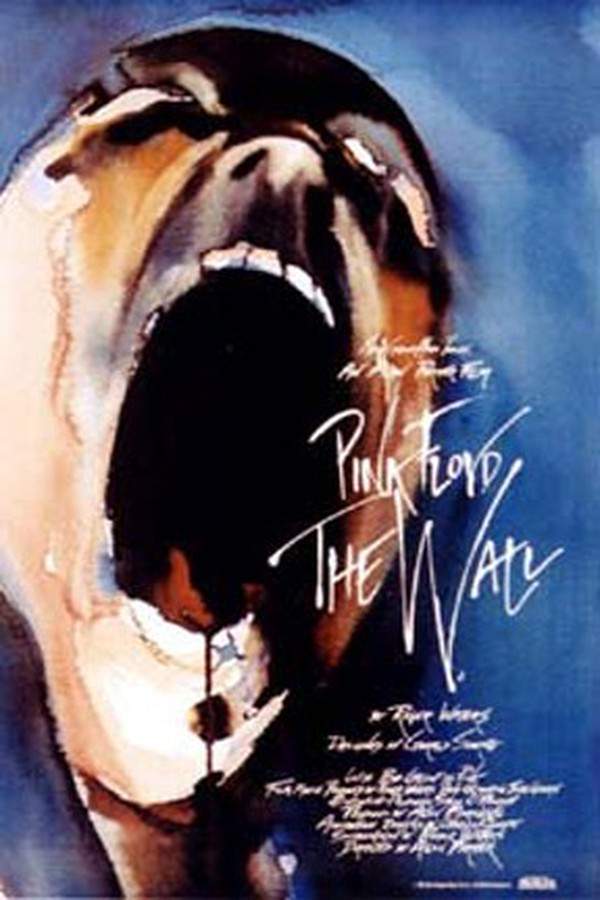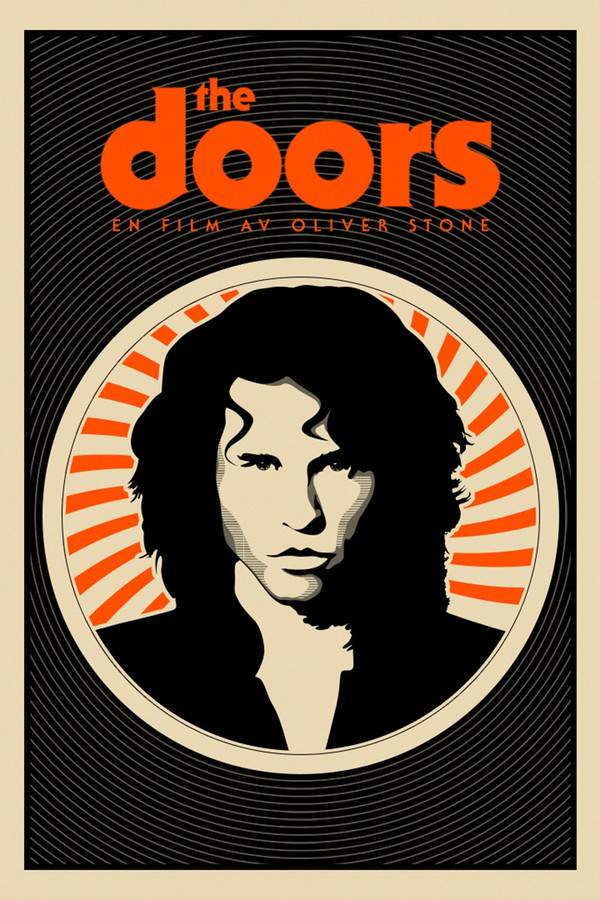
Pink Floyd: The Wall 1982
Directed by

Alan Parker
Test your knowledge of Pink Floyd: The Wall with our quiz!
Pink Floyd: The Wall Plot Summary
Read the complete plot summary and ending explained for Pink Floyd: The Wall (1982). From turning points to emotional moments, uncover what really happened and why it matters.
The film narrates the construction and eventual demolition of a symbolic wall, evoking themes of isolation and alienation that can be interpreted in various ways. The protagonist, Pink, portrayed by Bob Geldof, is depicted as a rock star struggling with his emotional detachment and depressive state. The story opens in a hotel room that he has turned upside down, set to the haunting melody of Vera Lynn’s “The Little Boy that Santa Claus Forgot” rather than music by Pink Floyd.
As the narrative unfolds, we learn about Pink’s deeply troubled past. His father, a British soldier, was killed in World War II when Pink was just an infant, which echoes the real-life loss experienced by Roger Waters, whose own father died in battle. The stark imagery of modern rock concerts is jarringly compared to soldiers rushing into combat, portraying a chaotic world.
The film flashes back to Pink’s childhood in the 1950s, where he grapples with the absence of a father figure, crying out for connection (“Another Brick in the Wall, Part I”). He discovers memorabilia from his father’s military service, including a bullet that he dramatically places on the track of an approaching train, symbolizing his deep sense of loss. At school, he faces humiliation when caught writing poetry—poems that his abusive teacher reads aloud (“The Happiest Days of Our Lives”). This oppressive school environment sparks a vivid fantasy in which the students rise against their tormentor, leading to the destruction of the school itself (“Another Brick in the Wall (Part 2)”). Additionally, Pink’s overbearing mother, portrayed with gravitas, further complicates his emotional landscape (“Mother”).
As an adult, Pink marries, yet they drift apart due to his increasingly self-destructive behavior. On tour in the United States, he discovers that his wife is being unfaithful, which drives him into the arms of a willing groupie, portrayed by Jenny Wright. This encounter ends violently, culminating in a harrowing display of emotional turmoil when Pink shatters his hotel room in a fit of rage (“One of My Turns”). As despair grips him (“Don’t Leave Me Now”), he lashes out at his television with his guitar, declaring he needs “no one at all” (“Another Brick in the Wall, Part III”), marking the completion of the wall he has built around himself to shield from emotional pain (“Goodbye Cruel World”).
In a harrowing descent, Pink loses his sanity, depicted metaphorically as “worms” invade his mind. He finds himself transforming into a disturbing neo-Nazi alter-ego while watching The Dam Busters (1955). His manager, Bob Hoskins, along with some hotel staff, break into his room and forcefully sedate him for a performance (“Comfortably Numb”).
In a disturbing fantasy sequence, Pink imagines himself as a dictator at a neo-Nazi rally, targeting those he perceives as different (“In the Flesh”). The chaos escalates as violence erupts, culminating in a rally set in suburban London, interspersed with animated imagery of marching hammers through the ruins (“Run Like Hell,” “Waiting for the Worms”). Eventually, Pink’s hallucinations shatter, leading him to seek refuge in a bathroom stall while reciting poetic lines that would later become lyrics for Pink Floyd’s work.
In a striking and surreal climax, Pink stands trial (“The Trial”), depicted as a small, immobile pink doll before a comically grotesque judge. The proceedings involve a slew of witnesses, including his mother and wife, who represent the emotional baggage weighing him down. Ultimately, the judge orders the wall to be destroyed. In a dramatic explosion, the wall blasts apart, revealing a montage of the film’s events, culminating in Pink’s anguished scream. The film concludes with three children tasked with cleaning up the aftermath of turmoil, leaving the fate of Pink shrouded in mystery and inviting viewers to reflect on his journey and its implications.
Pink Floyd: The Wall Timeline
Follow the complete movie timeline of Pink Floyd: The Wall (1982) with every major event in chronological order. Great for understanding complex plots and story progression.
Opening Scene
The film begins in a chaotic hotel room that the protagonist, Pink, has completely trashed. Set to the melancholic tune of Vera Lynn's song, it establishes an atmosphere of emotional turmoil and sets the tone for Pink's story.
Pink's Father's Death
We learn that Pink's father was a British soldier killed in World War II when Pink was just an infant. This personal tragedy evokes real-life parallels, reflecting the emotional void and loss that haunt Pink throughout his life.
Childhood Struggles
Flashing back to the 1950s, Pink grapples with the absence of his father and experiences deep feelings of isolation. The depiction of his emotional landscape reveals his struggle for connection during his formative years.
School Humiliation
At school, Pink faces humiliation when a teacher reads aloud his poetry to the class, further exacerbating his feelings of alienation. This experience ignites a violent fantasy among the students, leading to a rebellion against their oppressive teacher.
Fantasy Rebellion
In a vivid dream, Pink and his classmates band together to destroy the school. This segment starkly contrasts with the oppressive environment, embodying their repressed frustrations toward authority.
Conflict with Mother
Pink’s relationship with his overbearing mother complicates his emotional state. Her protective nature adds to his feelings of entrapment, leading him further into isolation.
Marriage Breakdown
As an adult, Pink marries but the relationship deteriorates due to his self-destructive behavior. This disconnect is amplified when he learns of his wife's infidelity while on tour in the United States.
Rage and Destruction
In a fit of rage fueled by despair, Pink violently tears apart his hotel room. This act symbolizes his internal chaos as he lashes out, signifying his emotional unraveling.
Isolation Deepens
Pink's emotional descent continues as he declares his desire for solitude. He begins to close himself off completely, building a psychological wall to protect against further pain.
Loss of Sanity
Pink's mental state deteriorates further as he becomes consumed by hallucinations. He transforms into a disturbing neo-Nazi figure, symbolizing his ultimate detachment from reality and the world around him.
Forced Intervention
His manager and hotel staff forcibly intervene, sedating Pink as he prepares for a performance. This crisis point underscores his spiraling decline and how far removed he has become from his former self.
The Neo-Nazi Rally
In a disturbing fantasy sequence, Pink imagines leading a neo-Nazi rally, filled with chaos and violence. This event amplifies his feelings of alienation and hatred towards those he perceives as different.
Psychological Tribunal
Pink stands trial in his mind, depicted as a small doll before a grotesque judge. The trial features characters from his life, representing emotional burdens that have led to his downfall.
Destruction of the Wall
Ultimately, the judge orders Pink's psychological wall to be destroyed, culminating in a dramatic explosion. This moment signifies the shattering of his defenses and the potential for healing.
Aftermath and Reflection
In the aftermath, three children are seen tasked with cleaning up the remnants of the chaos. This poignant ending invites viewers to reflect on Pink's tumultuous journey and the broader themes of isolation and human connection.
Pink Floyd: The Wall Characters
Explore all characters from Pink Floyd: The Wall (1982). Get detailed profiles with their roles, arcs, and key relationships explained.
Pink (Bob Geldof)
Pink is a troubled rock star embodying emotional detachment, loss, and despair. His journey through childhood trauma, failed relationships, and ultimately madness reveals the impact of isolation and societal expectations on his identity.
Manager (Bob Hoskins)
The manager represents the harsh reality of fame, as he attempts to ground Pink amidst his spiraling life. His forceful intervention during Pink's breakdown underscores the conflict between artistic integrity and commercial pressure.
Groupie (Jenny Wright)
The groupie symbolizes fleeting connections in Pink's chaotic life. Her relationship with Pink exacerbates his emotional turmoil, serving as a catalyst for his descent into self-destruction.
Pink Floyd: The Wall Settings
Learn where and when Pink Floyd: The Wall (1982) takes place. Explore the film’s settings, era, and how they shape the narrative.
Time period
1950s, 1980s
The narrative unfolds across two significant time periods: the 1950s and the 1980s. The 1950s represent Pink's troubled childhood, shaped by the absence of his father and oppressive schooling, while the 1980s illustrate his descent into fame, emotional detachment, and eventual collapse as a rock star.
Location
Hotel Room, Suburban London
The movie prominently features a hotel room, which becomes a chaotic symbol of Pink's emotional turmoil and detachment. Suburban London serves as the backdrop during pivotal moments, including the unsettling neo-Nazi rally that reflects society's darker aspects.
Pink Floyd: The Wall Themes
Discover the main themes in Pink Floyd: The Wall (1982). Analyze the deeper meanings, emotional layers, and social commentary behind the film.
🧱
Isolation
Isolation is a central theme, embodied by the metaphorical wall Pink constructs. This wall represents his emotional barriers and detachment from the world, highlighting the consequences of his troubled past and relationships on his psyche.
😔
Loss
Loss permeates Pink's journey, from his father's death in World War II to his failed marriage. Each loss exacerbates his emotional struggles, driving him deeper into despair and leading to his self-destructive tendencies.
🎭
Identity
The theme of identity is explored as Pink grapples with his sense of self amid fame, trauma, and societal pressures. His transformation into a neo-Nazi alter-ego represents a disturbing rejection of his true self, highlighting the consequences of unchecked alienation.

Coming soon on iOS and Android
The Plot Explained Mobile App
From blockbusters to hidden gems — dive into movie stories anytime, anywhere. Save your favorites, discover plots faster, and never miss a twist again.
Sign up to be the first to know when we launch. Your email stays private — always.
Pink Floyd: The Wall Spoiler-Free Summary
Discover the spoiler-free summary of Pink Floyd: The Wall (1982). Get a concise overview without any spoilers.
In a stark hotel room somewhere in Los Angeles, a celebrated musician lies amid the remnants of a life that feels both glittering and hollow. The film opens with him confronting an inner collapse that blurs the boundaries between memory and imagination, drawing the viewer into a landscape where reality twists into vivid, animated reveries. This unsettling mix of live‑action and stylized illustration creates a dream‑like canvas that mirrors his fragmented state of mind, setting a tone that is at once haunting, surreal, and deeply introspective.
At the heart of the story is Pink, a rock star whose outward success masks a deepening sense of isolation. Haunted by the loss of his father, the overprotectiveness of his mother, and the pressures of fame, he begins to erect an invisible barrier around himself—a metaphorical wall built from pain, fear, and lingering grief. The narrative hints at how each layer of his past, from childhood longing to adult disconnection, adds another brick to this self‑imposed fortress, suggesting a relentless internal battle between the desire for protection and the yearning for freedom.
The world around him is a chiaroscuro of stark concert venues, oppressive school corridors, and intimate domestic spaces, each rendered with a visual flair that oscillates between gritty realism and stark, symbolic animation. The soundtrack, echoing the band’s iconic music, weaves through the scenes, amplifying the emotional undercurrents and reinforcing the film’s oppressive yet lyrical atmosphere. As Pink navigates this intricate terrain, the audience is invited to feel the weight of his psychological turmoil without ever seeing the ultimate resolution, leaving a lingering curiosity about whether his wall will ever crumble.
Can’t find your movie? Request a summary here.
Movies with Similar Twists and Themes
Uncover films that echo the narrative beats, emotional arcs, or dramatic twists of the one you're exploring. These recommendations are handpicked based on story depth, thematic resonance, and spoiler-worthy moments — perfect for fans who crave more of the same intrigue.
Featured on this page

What's After the Movie?
Not sure whether to stay after the credits? Find out!
Explore Our Movie Platform
New Movie Releases (2025)
Famous Movie Actors
Top Film Production Studios
Movie Plot Summaries & Endings
Major Movie Awards & Winners
Best Concert Films & Music Documentaries
Movie Collections and Curated Lists
© 2025 What's After the Movie. All rights reserved.








